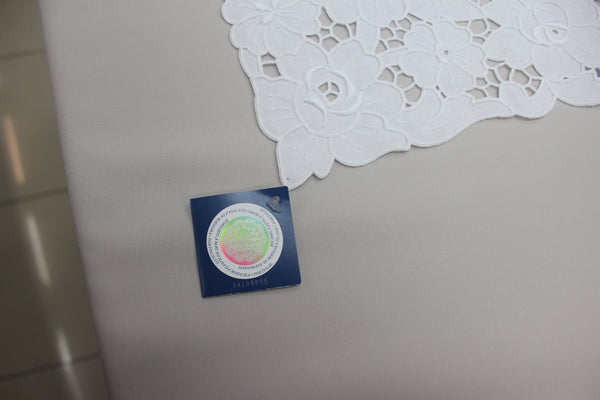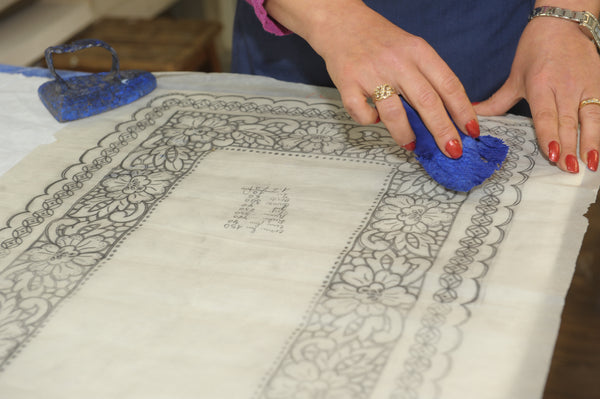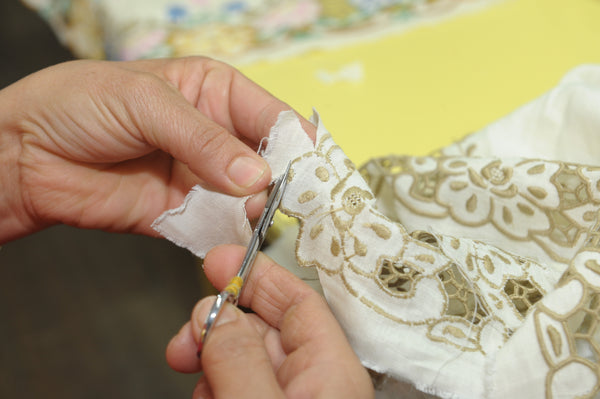Madeira Embroidery
Madeira Embroidery is a premium centuries-old type of embroidery handmade in (and inspired by) the beautiful island of Madeira, Portugal. The fabrics used are linen, cotton, silk and organdie, and it's traditionally used in table, bed and bath linen, as well as in women and baby clothing. The (manual) process and very high quality bar for the finished pieces have remained the same for almost two centuries.

Lino & Araújo, established in 1926, is one of the oldest manufacturers and exporters of the original handmade Madeira Embroidery.
For ideas and inspiration on uses of Madeira Embroidery, check this article.
Centuries of history
The history of Madeira Embroidery goes as far back as the history of Madeira Island itself, colonized by Portuguese settlers more than 500 years ago. For centuries, pieces of linen, cotton, silk and organdie have been hand embroidered in Madeira to produce table, bed and bath linen, as well as women and baby clothing. It became a commercial product and a key industry of the local economy only by mid 19th century, though, by influence of the British, German and Sirian, who helped make it known and available internationally. For this reason, mid 19th century is often (and incorrectly) referred to as the birth date of Madeira Embroidery. In fact, the oldest reference to Madeira Embroidery goes as far back as the 16th century.
A more detailed account of the History of Madeira Embroidery can be found in this article and in Wikipedia (both in Portuguese only, unfortunately).
Manufacturing Process
There are 6 phases in the hand manufacturing process:
- Design - the design is made on wax paper. Fun fact: some of the designs in our collection (of thousands) are almost a century old!
- Perforation - the wax paper is perforated along the lines of the design. Fun fact: this is a manual task done on a decades old mechanical machine.
- Tracing - a sponge soaked in a special blue ink is rubbed onto the perforated wax paper, transferring the drawing onto the fabric below.
- Embroidering - the fabric is sent to one of hundreds of embroiderers all over the Island, who will for many hours (or days even) and very patiently do all the Madeira Embroidery stitches according to the blue markings on the fabric, but imprinting their own artistic interpretation and personal style of embroidering. No two pieces are exactly the same, it's a work of art.
- Finishing - the items return to the factory to be checked, trimmed, washed and ironed.
- Certification - IVBAM, a government owned organization, checks the authenticity and quality of the handmade work and attaches a Seal of Certification (since 2000, a hologram). Fun fact: there is a set of very strict rules that the final pieces have to comply in order to be certified, which include, among others, rules on the design, materials, colors and the embroidery itself.

For more details on the process, please check the official website of IBVAM.
Madeira Embroidery Stitches
There are 18 types of Madeira Embroidery stitches - Pulled Thread, Ana, Ladder Stitch, Outline, Atraz, Padded Satin, Closed Blanket and Scalloped Blanket Buttonhole, Satin Stitch, Whipped Running Stitch, Pin (or French) Stitch, Open Leaf and Satin Leaf, Rondels, Open Eyelet and Satin Circle, Long and Short, Broderie Anglaise With Bars, Seed Stitch, Richelieu/ Cutwork With Bars, Shadow Work.
You can check images and descriptions for each type at the official website of IBVAM.



